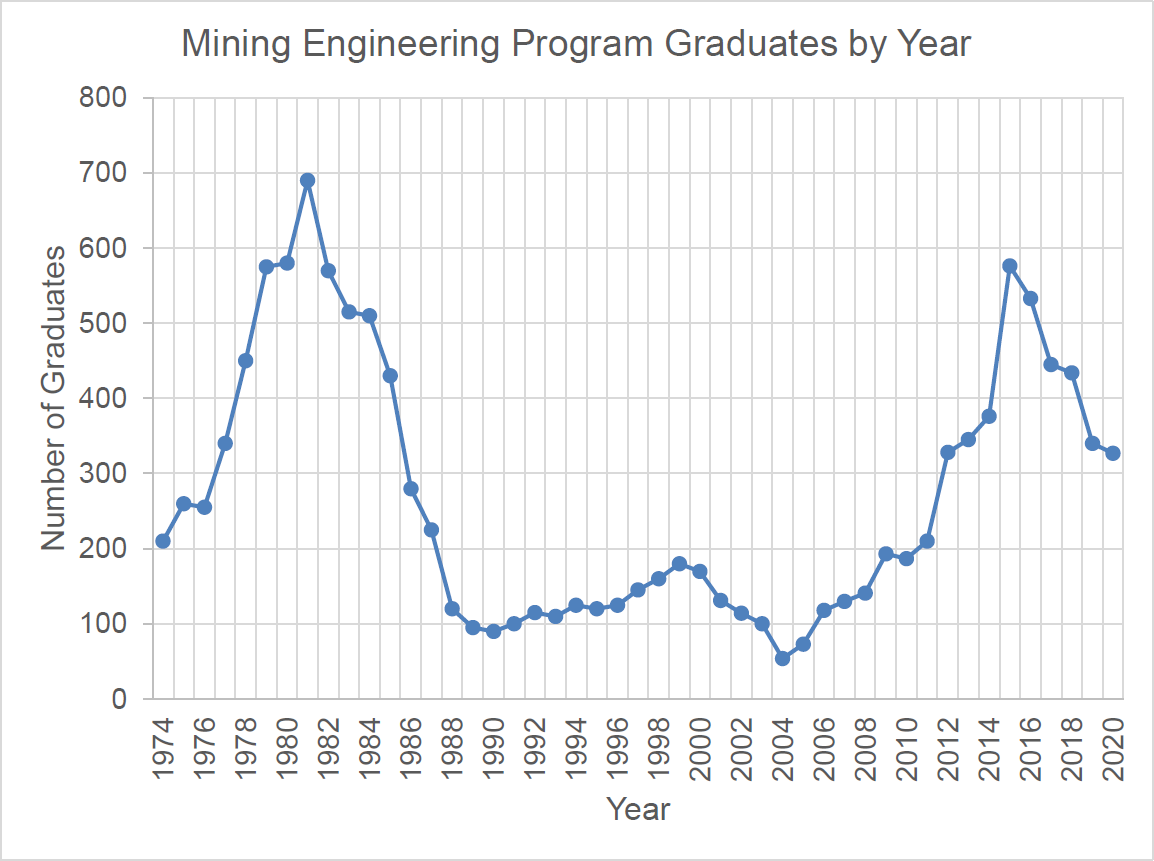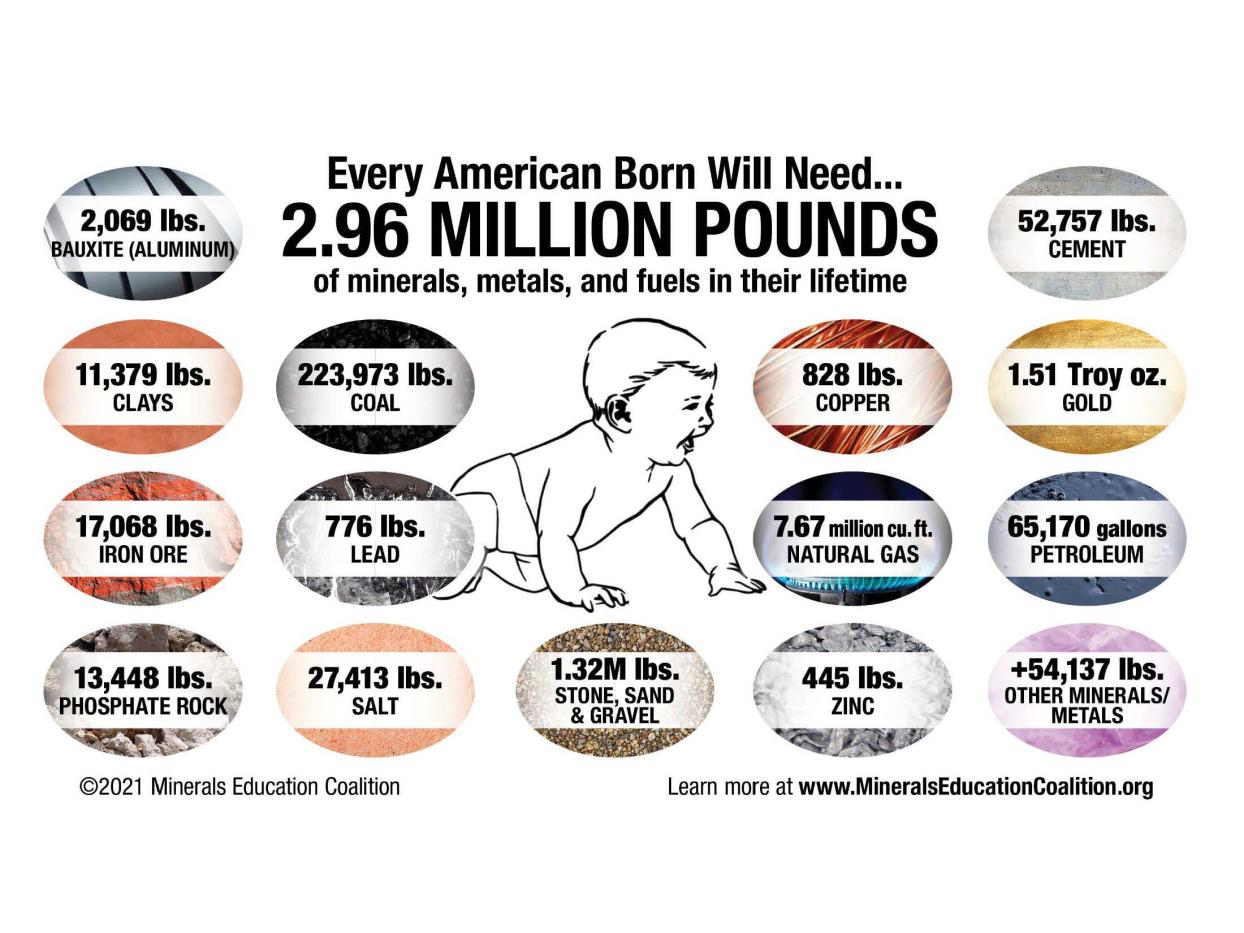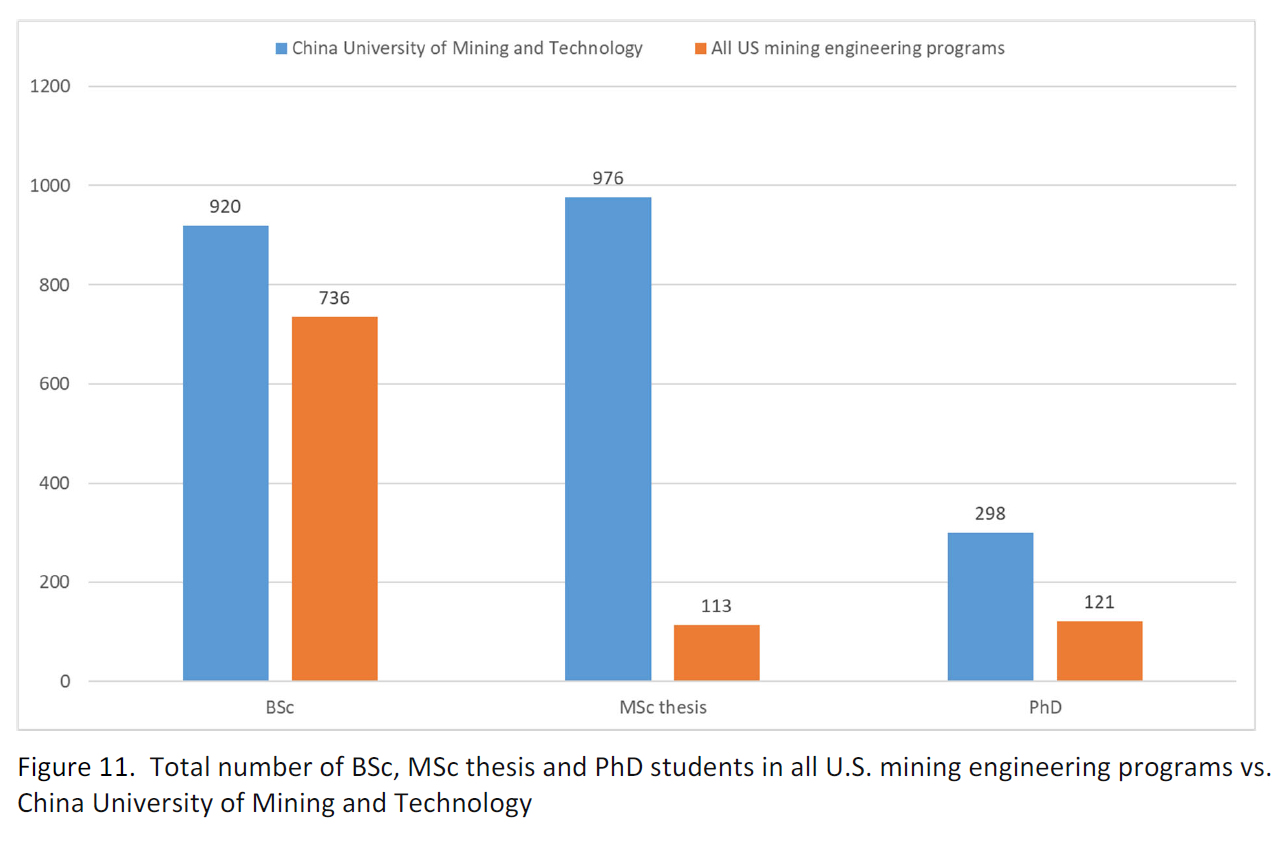Listen Now
Issue
The United States (U.S.) energy and mining industry is dependent upon a qualified workforce trained at the university level in mining engineering programs and related disciplines that are essential to the operation of U.S. mines.
These programs are national assets, critical to training the workforce needed to produce the raw materials and critical minerals for our national security, restoration of aging infrastructure, and for the transition to a clean energy future.
Notwithstanding their importance, these programs suffer from dwindling federal investment and research and development (R & D) funding. The decrease in program investment and R & D funding has contributed to a decline in mining engineering and related program faculty, enrollment, and graduation rates.
This shortage of qualified workforce threatens to increase U.S. reliance on imports of raw materials and critical minerals from other countries, specifically those mined in geopolitically unstable regions.
Figure 1 shows a general decrease in the number of mining engineering program graduates since the early 1980s peak. Since 2015 alone, the number of graduates has decreased by about 43%. Concurrently, the number of accredited mining engineering programs decreased from 25 in 1982 to 14 in 2020 (Table 1).

TABLE 1. U.S. ABET Accredited Programs in Mining, Metallurgical and Geological Engineering in 2020.
| Mining | Metallurgy | Geological | |
|---|---|---|---|
| Alabama, The University of | X | ||
| Alaska Fairbanks, University of | X | X | |
| Arizona, The University of | X | ||
| Colorado School of Mines | X | X | X |
| Kentucky, University of | X | ||
| Michigan Technological University | X | X | |
| Minnesota - Twin Cities, University of | X | ||
| Mississippi, University of | X | ||
| Missouri University of Science and Technology | X | X | X |
| Montana Tech of the University of Montana | X | X | X |
| Nevada, Reno, University of | X | X | X |
| New Mexico Institute of Mining and Technology | X | ||
| North Dakota, University of | X | ||
| Pennsylvania State University | X | ||
| South Dakota School of Mines and Technology | X | X | X |
| Texas at Austin, University of | X | ||
| Texas at El Paso, University of | X | ||
| Utah, The University of | X | X | X |
| Virginia Polytechnic Institute and State University | X | ||
| West Virginia University | X | ||
| University of Wisconsin - Madison | X | ||
| 14 | 8 | 13 |
See https://amspub.abet.org/aps/category-search
For Mining and Geological Engineering, check SME-AIME (SME is the Lead Society)
For Metallurgical, check TMS (SME is the Cooperating Society)
Background
The U.S. has one of the highest standards of living in the world and as such, is the world’s largest user of several mineral commodities, many of which are abundantly found in the U.S. Today, mining in the U.S. directly employs nearly 500,000 people and accounts for approximately 1.3 million jobs in the general economy. Direct and indirect tax payments exceed $41 billion. The mining industry’s contributions to GDP are nearly $200 billion annually.1 Processed materials of mineral origin account for $3 trillion in value added to GDP.2
Mineral needs for a single person to support the U.S. modern lifestyle are illustrated in Figure 2, and total mineral needs for the U.S. are expected to increase as the population rises. Sourcing the quantity of rare earth elements (REE) and other critical minerals needed to sustain the U.S. modern lifestyle requires a qualified workforce and research performed in industry and at research laboratories and institutions, such as the U.S. National Laboratories.

https://mineralseducationcoalition.org/wp-content/uploads/MECMB21pdf.pdf
What is required to educate and train the workforce needed to support domestic mining? A properly trained and educated workforce must hold university degrees in mining engineering and related programs, such as geological engineering, metallurgy, environmental science, hydrology, and geophysics, and, in many instances, more advanced levels of education and training are required. Universities with mining engineering and related programs have long sought to find sources of funding to support their programs, but a lack of funding continues to inhibit the efforts of universities to attract students and retain mining-related programs. This means fewer qualified graduates and a fewer number of available accredited programs.
- A loss of state funding has contributed to the decline in the number of mining schools from 25 to 14 – As mentioned previously, the number of U.S. accredited mining engineering programs has declined from a high of 25 in 1982 to 14 in 2020 (Table 1). Most of these universities have experienced a decrease in state funding.
- 12 schools have closed their mining programs - The following universities have closed their mining engineering programs since 1985: University of California Berkeley; Southern Illinois University, Carbondale (SIU-C); Ohio State; University of Minnesota; University of Alabama; University of Idaho; Columbia University; University of Pittsburgh; Texas A&M; University of Washington; University of Wisconsin – Madison; and the University of Wyoming.
- Declining enrollment means fewer faculty members - There has been a corresponding decline in U.S. qualified faculty in these programs as well as a shortage of qualified candidates to fill faculty vacancies.
- Mining Engineering Enrollment has declined by 45% since 2015 alone - Mining engineering enrollment in the U.S. was only 851 students in 2019, where the number of students was artificially high due to the number of foreign students enrolled in graduate programs, down from 1,561 in 2015 despite a global industry demand for mining engineers exceeding the supply.
Worldwide Competition for Qualified Educated Workers - The main competition for mining-related professionals comes from countries with ongoing mining booms. China has more mining-related programs, students, and faculty than the U.S. In fact, the China University of Mining and Technology alone enrolls more engineering students than all U.S. mining engineering programs combined.i

The shortage in qualified industry professionals could lead to mining project cost overruns and even impact workplace safety. Permitting delays may be inevitable because government regulating agencies cannot find qualified specialists to perform the necessary reviews.
The demand for mining and mineral engineering professionals has increased beyond the current educational capacity. Federal funding and support are needed to address this deficiency.
SME Statement of Technical Position
Recent federal actions and Executive Orders to address supply chain disruptions in critical minerals are positive steps, but more is needed to stave off the crisis in universities with mining-related programs, including the following:
- Establishment of federal scholarships and grant programs for accredited U.S. mining schools;
- Dramatically increased and sustained funding for mining engineering and minerals-related research activities at universities, as well as federal and state agencies, including: The U.S. Geological and state geological surveys; the Department of Energy, National Laboratories, National Institute for Occupational Safety & Health (NIOSH) and other research institutes.
- Development of Centers of Excellence in Mineral Resources at the existing research universities funded at a multi-year level sufficient to satisfy the academic metrics of each university and to develop a quality pool for the future professorate.
- Development of and successful implementation of a national mineral resource strategy that allows the U.S. to continue to produce mineral resources, especially critical minerals, in an environmentally sound and sustainable manner. The National Research Council of the National Academies of Science and the mining-related professional societies (like SME) can assist with a research roadmap to help achieve the proposed strategy.
- Examination of the current distribution of responsibilities for mineral resources management within the federal government should determine whether existing structures optimize the sustainable development of our mineral endowment. This may include the establishment of a consolidated national minerals policy branch to coordinate mineral resource activities of all appropriate federal agencies.
1 U.S. Geological Survey, 2021, Mineral commodity summaries 2021: U.S. Geological Survey, Mineral Commodity Summaries 2021 (usgs.gov)
iSource, SME and Society of Mining Professors Report – SME Presentation, SME Workforce Strategic Committee (2022)
